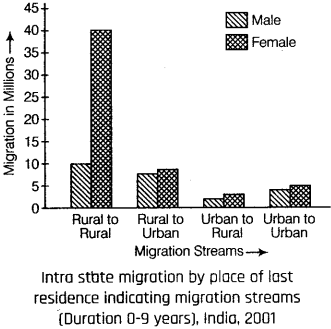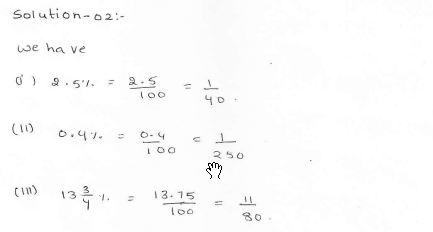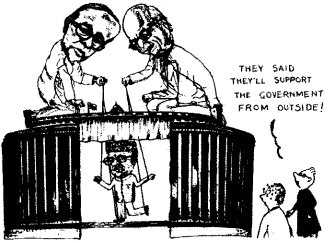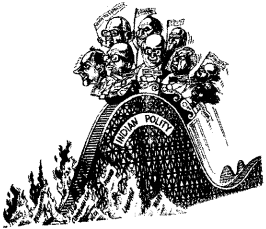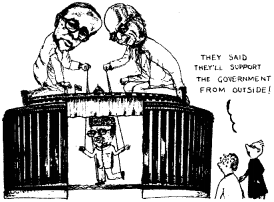Political Science Class 12 Important Questions Chapter 11 Era of One-Party Dominance is part of Political Science Class 12 Important Questions. Here we have given Political Science Class 12 Important Questions Chapter 11 Era of One-Party Dominance.
Political Science Class 12 Important Questions Chapter 11 Era of One-Party Dominance
1 Mark Questions
Question 1.
During the first three general elections, Congress won more seats than any other party. Which party stood at number two during these elections? (All India 2014)
Answer:
The Communist Party of India.
Question 2.
Who was the founder of Bhartiya Jana Sangh? (All India 2014)
Answer:
The BJS was started by Shyamla Prasad Mukherjee on 21st October, 1951 in Delhi.
Question 3.
Which political party laid emphasis on the idea of one country, one culture and one nation? (Delhi 2014)
Answer:
Bhartiya Jana Sangh
Question 4.
In which year was the first general election to Lok Sabha held? (Delhi 2014)
OR
In which year was the first general election held in India. (All India 2012)
OR
In the first general election, how many seats did the Congress win? How many seats did the next largest party win? (Delhi 2010)
OR
Which party emerged as the second largest party in the 1952 General Elections? (All India 2009)
Answer:
First general election held in 1952. Congress won 364 seats and Communist Party of India (CPI) won 16 seats and emerged second largest party.
Question 5.
When was the Constitution of India ready and signed by members of the Constituent Assembly? When did it come into effect? (Delhi 2013)
Answer:
The Constitution was ready and signed by Members of Constituent Assembly on 26th November, 1949. It came into effect on 26th January, 1950.
Question 6.
Name the founder President of the Congress Socialist Party. What name was given to this party after 1948? (Delhi 2013)
OR
Name the political party of India which was founded by Acharya Narendra Dev before independence. (All India 2013)
OR
When was the Congress Socialist Party formed in India? (All indin 2009)
Answer:
The Congress Socialist Party was founded by Acharya Narendra Dev in 1948.
The party was named after 1948 as Communist Party.
Question 7.
When and where was the first non-Congress State Government formed after India’s independence? (Delhi 2011)
OR
In which state did the Indian National Congress face defeat in March 1957 Assembly Elections? (All India 2009)
OR
Where and when did the Communist Party come to power in the world for the first time through democratic elections? (All India 2008)
Answer:
Congress party face defeat in Kerala in March 1957 Assembly Elections. The Communist Party won the largest number of seats in the Kerala Legislature winning 60 out of 126 seats.
Question 8.
What were the election symbols of the Congress Party and Bhartiya Jana Sangh in the first general election of 1952? (All India 2011)
Answer:
In the first general election of 1952 the pair of oxen was the symbol of Congress party and lamp (Deepak) was the symbol of Bhartiya Jana Sangh.
Question 9.
Differentiate between ‘one party dominance, and ‘one party system’. (HOTS; All India 2011)
Answer:
‘One party dominance’ simply means dominance of one party in a democratic set up e.g. Congress Party in the early years of independence. On the other hand one party system, means existence of only one party in the country for e.g. Communist Party in China.
Question 10.
Bhartiya Jana Sangh laid emphasis on which two main ideas? (All India 2010)
Answer:
Bhartiya Jana Sangh laid emphasis on the following ideas :
- Reunion of India and Pakistan in Akhand Bharat.
- One country, one culture and one nation.
Question 11.
Fill in the blanks with appropriate word. The Commission of India was set up in January, 1950. (Delhi 2010)
Answer:
Election
Question 12.
Who was the Chairman of the Drafting Committee of the Constituent Assembly? (All India 2009)
Answer:
Dr BR Allbedkar was the chairman of the Drafting Committee of the Constitution.
Question 13.
Why did the critics think that elections in India will not be a success? Mention any two reasons. (HOTS; All India (C) 2008)
Answer:
The two reasons are as follows :
- India was a poor and illiterate country.
- Till mid of the 20th century many countries of Europe had not given uniform rights to all women. In this context India’s experiment with Universal Adult Franchise appeared very bold and risky.
Question 14.
Since 1989 until the elections of 2004 which party has been gaining strength in Lok Sabha? (Delhi 2008)
Answer:
Since 1989 until the elections of 2004 Bhartiya Janata Party (BJP) was gaining strength in Lok Sabha.
2 Marks Questions
Question 1.
How did the dominance of Congress Party in the first three general elections help in establishing a democratic set-up in India? (HOTS; Delhi 2015)
Answer:
Dominance of Congress Party in the first three general elections helped in establishing a democratic set-up in India in following ways :
- The coalition nature of the Congress Party tolerated and in fact encouraged various factions.
- It accommodated all the shades of the centre i.e. the revolutionary with pacifist, conservative with radical, extremist with moderate and the right with left.
Question 2.
In spite of token representation in the Indian legislatures during the fifties, what role did the opposition parties play? (HOTS; All India 2014)
Answer:
The opposition parties play the following roles:
- These parties offered a sustained and often principled criticism of the policies and practices of the Congress Party.
- This kept the ruling party under check.
Question 3.
Highlight any two features of the ideology of Bhartiya Jana Sangh. (Delhi 2014)
OR
Mention any two important features of Bhartiya Jana Sangh’s ideology. (All India 2013)
Answer:
Features of the ideology of the Bhartiya Jana Sangh are :
- It emphasised the idea of one country, one culture and one nation.
- It believed that the country could become modern, progressive and strong on the basis of Indian culture and traditions.
Question 4.
Explain the major difference of ideology between that of the Congress and the Jana Sangh. (Delhi 2014)
Answer:
The major difference of ideology between Congress and Bhartiya Jana Sangh was that Bhartiya Jana Sangh emphasised on one party country, one culture, one nation i.e. Hindu nation or Hindutva. Whereas Congress formed ideological and social coalitions, accommodating social diversities.
Question 5.
When was the Election Commission of India set-up? Who was its first Chief Election Commissioner? (All India 2013: Delhi 2010)
Answer:
The Election Commission of India was set-up in January 1950. Sukumar Sen became the first Chief Election Commissioner.
Question 6.
How did the Congress Party succeed in maintaining its dominance till 1967? (HOTS; All India 2011)
Answer:
Following reasons are responsible for dominance of Congress Party till 1967
- The Congress was already well-organised party and by the time other parties could think of a strategy, the Congress had already started its campaign.
- Congress had an organisational network down to the local levels.
Question 7.
What is meant by ‘one-party dominance’ in the Indian context? (All India 2009)
Answer:
One-party dominance means dominance of Congress party in first three general elections held in 1952, 1957 and 1962 in both Lok Sabha as well as in State Assemblies. In 1952, Congress won 364 seats out of 489, in 1957, 371 out of 494 and in 1962 won 361 out of 494 seats Lok Sabha elections.
Question 8.
How has the method of voting changed from the General Election of 1952 to the General Election of 2004? (HOTS; Delhi 2009)
Answer:
Method of voting has changed from General Election of 1952 to the General Election of 2004 in following ways
- After the first two elections the ballot paper carried the names and symbols of all the candidates and the voter was required to put a stamp on the name of the candidates they wanted to vote for.
- By 2004 the entire country had shifted to the Electronic Voting Machine (EVMs).
Question 9.
List any two differences between the socialist and communist parties. (HOTS; All India [C] 2008)
Answer:
The two differences between the socialist and Communist Party were :
- Communist Party believed in revolutionary socialism whereas Socialist party believed in ideology of democratic socialism.
- The Communist Party’s ideology was titled towards the Soviet Union and China whereas Socialists had no such ideological inclination.
Question 10.
What is meant by coalition government? When was the coalition government formed for the first time at the centre? (Delhi 2008)
Answer:
Coalition government is a government which is formed by different political parties coming together on the basis of common minimum programme. In 1977, the first time coalition government was formed at the centre under the PM Morarji Desai.
4 Marks Questions
Question 1.
What distinguished the dominance of the Congress Party in India from the one-party dominance in other countries? Explains, (All India 2017)
OR
What distinguished the dominance of the Congress Party in India from other examples of one party dominance in other countries? Explain. (Delhi 2016)
OR
How was one party dominance of India different from the other examples of one-party dominance in the world? (HOTS; Delhi 2008)
Answer:
One-party dominance in India and other country have dissimilarities. Indian political system is multi-party system. During 1952 to 1962, in every election Congress party won the elections. Elections held at regular intervals in India in free and fair atmosphere.
Many other political parties also participated but charismatic, effective and inspiring leadership of Congress leaders and the glorious legacy of Congress party continue the dominance of the Congress party in India. In Countries like China, Cuba, Syria and Mexico, Constitution permit only a single party to rule the country.
The Mexico’s PRI dominated for about 6 decades, but finally it turned into dictatorship. In these countries, election were often rigged and manipulated but in India all things have been done in the light of democracy.
Question 2.
Explain any four reasons for the dominance of the Congress Party in the first three general elections. (All India 2016, Delhi 2013)
OR
Describe any four factors which were responsible for the dominance of the Congress Party in India till 1967. (Delhi 2011)
Answer:
The Congress party succeed in maintaining its dominance till 1967 due to the following reasons :
- The Congress party was supported by elites, educated business classes and middle classes people. It also got support from peasants because of its socialist nature.
- It had many popular faces like Jawaharlal Nehru, C Rajgopalachari, Vallabhbhai Patel etc. Moreover Jawaharlal Nehru was charismatic and a very popular leader.
- Congress worked at upper level as well as at grass root level. Congress was popularised due to the participation in civil disobedience movement.
- During period of Nehru Ji, Congress attained mass popularity, but the powerful narrow elite of Congress continued to benefit from the low level of political consciousness of the electorate.
- The traditional localities made Congress, a one-party dominance.
Question 3.
Who founded the Swatantra Party in 1959? Describe any three policies and progrAllmes of this party. (All India 2013)
Answer:
Swatantra Party was founded by C Rajagopalachari in 1959. Three policies and progrAllmes of party were :
- The Swatantra Party wanted the government to be less and less involved in controlling the economy. It believed that prosperity could come only through individual freedom.
- It was critical of the development strategy of state intervention in the economy, centralised planning, nationalisation and the public sector. It instead favoured expansion of a free private sector.
- The Swatantra Party was against land ceilings in agriculture, and opposed cooperative farming and state trading.
Question 4.
Explain any four problems before the Election Commission of India for holding the First General Election. (Delhi 2013)
Answer:
The Election Commission of India was set-up in January 1950 and the commission discovered that it was not going to be easy to hold free and fair election in a country of India’s size. Following were the problems before the Election Commission of India for holding the First General Election :
- Holding an election required delimitation or drawing the boundaries of the electoral constituencies.
- It also required preparing the electoral rolls, or the list of all the citizens eligible to vote.
- Only 15 per cent of eligible voters were literate.
- The vast size of country was a big challenge.
Question 5.
Match the following (Delhi 2012)
| A. | S.A. Dange | 1. | Bhartiya Jana Sangh |
| B. | Shyam Prasad Mukherjee | 2. | Swatantra Party |
| C. | Minoo Masani | 3. | Praja Socialist Party |
| D. | Ashok Mehta | 4. | Communist Party of India |
Answer:
| A. | SA Dange | 4. | Communist Party of India |
| B. | Shyam Prasad Mukherjee | 1. | Bhartiya Jana Sangh |
| C. | Minoo Masani | 2. | Swatantra Party |
| D. | Ashok Mehta | 3. | Praja Socialist Party |
Question 6.
Match the following (All India 2012)
| A. | Acharya Narendra Dev | 1. | Praja Socialist Party |
| B. | AK Gopalan | 2. | Communist Party of India (M) |
| C. | Rafi Ahmed Kidwai | 3. | Indian National Congress |
| D. | Deen Dayal Upadhyaya | 4. | Bharatiya Jana Sangh |
Answer:
| A. | Acharya Narendra Dev | 3. | Praja Socialist Party |
| B. | AK Gopalan | 4. | Communist Party of India (M) |
| C. | Rafi Ahmed Kidwai | 2. | Indian National Congress |
| D. | Deen Dayal Upadhyaya | 1. | Bharatiya Jana Sangh |
Question 7.
Match the following (All India 2012)
| A. | EMS Namboodiripad | 1. | Swatantra Party |
| B. | Balraj Madhok | 2. | Socialist Party |
| C. | C Rajagopalachari | 3. | Communist Party of India |
| D. | Rammanohar Lohia | 4. | Bharatiya Jana Sangh |
Answer:
| A. | EMS Namboodiripad | 3. | Communist Party of India |
| B. | Balraj Madhok | 2. | Socialist Party |
| C. | C Rajagopalachari | 1. | Swatantra party |
| D. | Rammanohar Lohia | 4. | Bhartiya Jana Sangh |
Question 8.
Highlight the changes introduced in the voting methods in India after 1952. (Delhi 2011)
OR
Describe any two significant changes in the method of voting in India since 1952. (All India 2010)
OR
How has the method of voting changed in India after the first two general elections and until 2094? (Delhi to 2008)
OR
What was the methoa of voting adopted in the first two general elections in India? (All India to 2000)
Answer:
The following changes introduced in the voting methods in India afte’ 1952 :
(i) During the first general election a box was placed in each pooling booth with the election symbol of candidates. Each voter got a blank ballot paper and had to drop into the box of the candidate they wanted to vote for. Initially about 20 lakh steel boxes were used for this purpose.
(ii) In 3rd to 13th general election, ballot paper carried the nAlles and symbols of all the candidates an l votes had put a stAllp on the candidal *s’s nAlle. This technique worked for 40 years.
(iii) In the end of 1990s, the Election Commission introduced Electronic Voting Machine (EVM) and in 2004 it was used extensively all over the country.
Question 9.
Briefly explain the role of opposition parties in India (All India 2000)
OR
What is meant by opposition in a democratic system? Describe any two activities of the opposition during the first two ParliAllents of 1952 and 1957. (Delhi 2010)
OR
During the early years of independence, despite the fact that the opposition parties had a token representation, they played a crucial role in maintaining the democratic character of the system. How? (All India 2008)
OR
List any four activities of the opposition during the ParliAllents of 1952 and 1957. (Delhi to 2000)
Answer:
At the time of Independence, there were many opposition parties and after independence it increased, but it gained only token representation in the Lok Sabha and also in state assemblies. Yet their presence played a crucial role in maintaining the democratic character of the system.
The four activities of the opposition during the ParliAllent of 1952 and 1957 are as follows :
- These opposition parties offered sustained and principled criticism of the policies and practices of the Congress Party. This phenomena indicated the check and balance of power of the Congress.
- In 1957, in Kerala, Congress was defeated by CPI and made government, but after that Congress dismissed the Kerala Government under Article 356. It was criticised by the opposition leaders and said that it was the first instance of the misuse of constitutional emergency powers.
- In 1950, BJS was able to secure 3 seats and in 1957 it secured 4 seats. The party played the role of opposition and started agitation to replace English with Hindi as the official language and also advocated for the development of nuclear weapons.
- the opposition parties prevented the resentment with the system from turning anti-democratic. These parties also groomed the leaders (young citizens) who wanted to shape
the India as developed and powerful state.
Question 10.
Match the names of the founders given below with the political parties they founded. (Delhi 2010)
| Founders | Political Parties | ||
| A. | C Rajagopalachari | 1. | Telugu Desam Party |
| B. | Deen Dayal Upadhyaya | 2. | Swatantra Party |
| C. | NT Rama Rao | 3. | Lok Dal |
| D. | Ch Charan Singh | 4. | Bhartiya Jana Sangh |
Answer:
| Founders | Political Parties | ||
| A. | C Rajagopalachari | 2. | Telugu Desam Party |
| B. | Deen Dayal Upadhyaya | 4. | Swatantra Party |
| C. | NT Rama Rao | 1. | Lok Dal |
| D. | Ch Charan Singh | 3. | Bhartiya Jana Sangh |
Question 11.
Explain the functioning of the Communist Party of India from 1920 to 1950. (All India 2009)
Answer:
In 1920 Communist Party of India (CPI) was inspired by the Bolshevik Revolution of Russia and it advocated socialism as the solution to all problems affecting the country.
CPI worked under the umbrella of Congress from 1935 with different ideologies.
In 1941, CPI supported the British against Germany in World War therefore, its relation with Congress was hAllpered. The party raised the voice in Constituent Assembly and said that India was real or merely a facade.
It also encouraged violent uprising in Telangana. There after CPI decided to participate in general election.
Question 12.
How did the prevalence of ‘one-party dominance system’ adversely affect the democratic nature of India politics? (Delhi 2009)
Answer:
The one party dominance system tried to establish anarchy and tyranny and brought crisis of the constitutional order. It made the party so powerful that the party dared to challenge the verdict passed by the courts. It also found opportunity to establish wrongful collusion of executive with bureaucracy and thus, atrocities were inflicted. People were gradually denied their FundAllental Rights and wrongful Allendments were made in the Constitution of the Country.
ExAllple of one-party dominance affecting the democracy in India politics can be seen as :
- In 1951 and 1975, Nehru and Indra Gandhi, imposed emergency in Kerala and Punjab respectively.
- In 1975-1977 red-tapism witnessed.
- Defiance to the order of AllAllabad High Court and Supreme Court of India by Indira Gandhi.
6 Marks Questions
Question 1.
“For a long time, Congress Party had been a social and ideological coalition”. Justify the statement (HOTS; Delhi 2014)
OR
“Congress had remained a social and ideological coalition for a long period” Justify the statement. (HOTS: All India 2013)
Answer:
After its origin in 1885 Congress Party evolved as an ideological and social coalition which gave it an unusual strength.
There were many factors for its coalition-like character :
- The Congress began as a party dominated by the English speaking, upper caste, upper middle-class and urban elite.
- With every civil disobedience movement it launched, its social base widened.
- It brought together diverse groups, whose interest were often contradictory.
- Peasants and industrialists, urban dwellers and villagers, workers and owners, middle, lower and upper classes and castes, all found space in the Congress.
- By the time of Independence, the Congress was transformed into a rainbow-like social coalition broadly representing India’s diversity in terms of classes and castes, religions and languages and various interests.
Question 2.
Analyse the reasons for the dominance of Congress Party in the first three general election. (Delhi 2014)
OR
ExAlline any three reasons for the dominance of Congress Party in the first three general elections in India. (All India 2014)
OR
Evaluate any three factors that helped the Congress to continue to dominate the Indian political scenario for almost three decades after independence. (Delhi 2012)
OR
ExAlline the main factors responsible for the rise and fall of the Congress Party’s dominance in India. (All India 2009)
OR
The period from 1952 to 1966 in Indian politics has been termed as an ‘era of one party dominance’. Do you agree? Explain any three factors that helped it in its dominance. (All India (C) 2008)
Answer:
The Congress Party succeed in maintaining its dominance till 1967 due to following reasons :
- The roots of this extraordinary success of the Congress Party go back to the legacy of the freedom struggle. Congress was seen as inheritor of the national movement. Many leaders who were in forefront of the struggle were now contesting elections as Congress candidates.
- The Congress Party was supported by elites educated business classes and middle classes people. It also got support from peasants because of its socialist nature.
- It had many popular faces like JawAllarlal Nehru, C Raja gopalachari, Vallabhbhai Patel etc. Moreover JawAllarlal Nehru was charismatic and a very popular leader.
- Congress worked at upper level as well as at grass root level Congress was popularised due to the participation in civil disobedience movement.
- During period of Nehru Congress attained mass popularity, but the powerful narrow elite of Congress continued to benefit from the low level of political consciousness of the electorate.
- The traditional loyalities made Congress, a one party dominance.
Question 3.
How was ‘one party dominance’ in India different from the ‘one party system in Mexico? In your opinion, which of the two political system is better and why? (All India 2012)
Answer:
There was a difference between one party dominance in India and One Party system in Mexico. In Mexico, this was a one party system only not dominance because :
- In India, the Congress Party dominated on behalf of popular consensus but Institutional Revolutionary Party (PRI) of Mexico ruled on behalf of perfect dictatorship.
- In India, free and fair elections took place, where the losing of election was also fair but in Mexico, elections were based on malpractices, dominated by PRI.
In our opinion one party dominance-like India is better because this sort of dominance :
- Accommodates social diversities
- Encourage large number of participation
- Ensure democratic spirit as well as maintains the sAlle.
- Bear respect even for opposition.
Question 4.
Explain how the general elections of 1952 in India were a landmark in the history of democracy all over the world. (All India 20o0)
Answer:
Election and people’s representation is the guiding principle of democratic philosophy. And India’s first general election was the big test of democracy in a poor and illiterate country.
The significance of India’s first general election held in 1952 could be understood as follows:
- It was held between 25th October, 1951 and 21st February, 1952. Earlier democracy had existed only in the prosperous countries i.e., mainly in Europe and North Allerica where nearly everyone was literate.
- In this regard, India’s experiment with universal adult franchise appeared very bold and risky. Some, scholars state that it was the biggest gAllble in history.
- Organiser of magazine nAlled ‘Organiser’, wrote that JawAllarlal Nehru would live to confess the failure of universal adult franchise in India.
- The first general elections which were conducted for 489 constituencies, represented 26 Indian states. At that time there were 314 constituencies with one seat, 86 with two seats and one with three seats. It becAlle a landmark in the history of democracy all over the world.
- It was no longer possible to argue that democratic elections could not be held in conditions of poverty or lack of education.
- It proved that democracy could be practised anywhere in the world.
Following steps were taken to hold the first general election :
- The Election Commission of India was set-up in January 1950.
- Electoral roll of eligible voters was prepared.
- Delimitation or drawing the boundaries of the electoral constituencies was completed.
- Over 3 lakh officers and polling staff to conduct the elections were trained.
Value-Based Question (VBQ)
Question 1.
Highlight the circumstances that compelled the socialists to form a separate socialist party in 1948. Mention any two grounds on which they criticised the Congress Party. (Delhi 2016)
Answer:
lYie Congress Socialist Party (CSP) was formed within the Congress in 1934 by a group of young leaders who wanted a more radical and egalitarian Congress. In 1948, the Congress Allended its Constitution to prevent its members from having a dual party membership. This forced the socialists to form a separate socialist party in 1948.
It criticised the Congress party on following two grounds :
- For favouring capitalists and landlords.
- For ignoring the workers and the peasants.
We hope the Political Science Class 12 Important Questions Chapter 11 Era of One-Party Dominance help you. If you have any query regarding Political Science Class 12 Important Questions Chapter 11 Era of One-Party Dominance, drop a comment below and we will get back to you at the earliest.
<!–
–>

